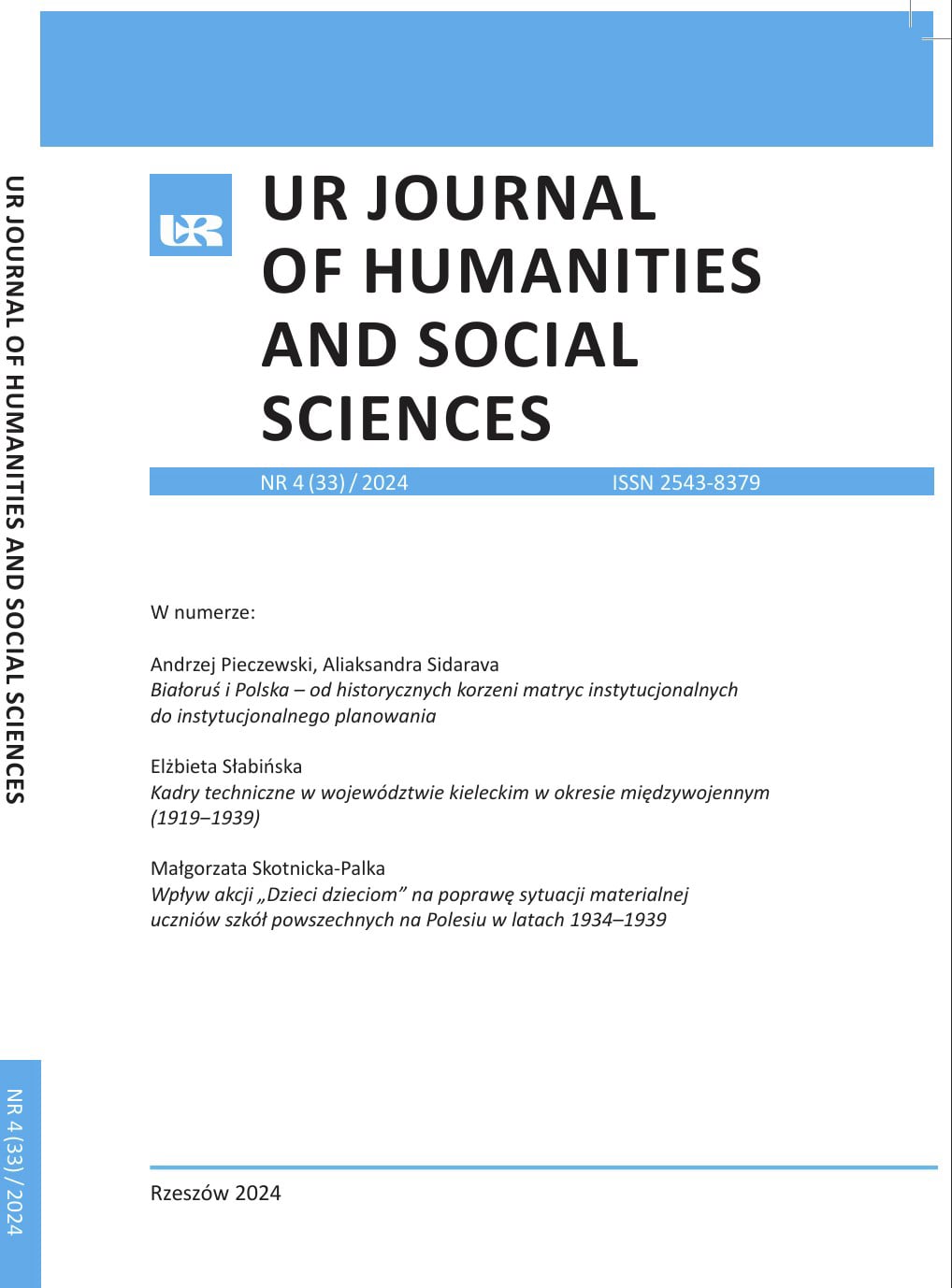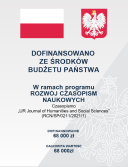Belarus and Poland ‒ from the historical roots of institutional matrices to institutional planning
DOI:
https://doi.org/10.15584/johass.2024.4.1Keywords:
institutional matrix, institutional planning, Belarus, Poland, Daron Acemoglu, James RobinsonAbstract
The institutional matrixes of contemporary Belarus and Poland are the result of a long historical process. Despite their close proximity and common history, these countries are now two completely different institutional systems. The aim of this article is to identify the strengths and weaknesses of the institutional matrices of Belarus and Poland and to identify the opportunities and threats arising from the specificities of the dominant institutions functioning in these countries. On the basis of this analysis, we attempt to identify the directions of desirable institutional changes increasing the efficiency of the political-economic-social system. Our recommendations are focused around the most difficult area ‒ the ideological plane ‒ containing a set of informal institutions created on the basis of culture during the historical process. Creating recommendations for institutional change for this area is a difficult challenge, as the directions of change are essentially dependent on the values that guide us. The axiological polarisation of the institutional systems (especially the political system) of these countries is very high. While we are able to indicate the desired directions of changes in mentality for Poland (and we do indicate them), from the so-called western point of view, for Belarus the axiological foundations of the political and economic system would have to be completely changed. This confirms the thesis that culture is the basis of political-social-economic systems, although in the case of both countries, the geopolitical context is of considerable importance.
Downloads
References
Acemoglu D., Robinson J.A., 2012, Why Nations Fail. The Origins of Power, Prosperity and Poverty, Profile Books, London.
Acemoglu D., Robinson J.A., 2019, The Narrow Corridor. States, Societies and the Fate of Liberty, Penguin Press, New York.
Béland D., 2009, Ideas, institutions, and policy change, „Journal of European Public Policy”, 16(5).
Campbell J.L., 2004, Institutional Change and Globalization, Princeton University Press, Princeton.
Democracy Index, 2023, https://www.eiu.com/n/campaigns/democracy-indekx2023/ dostęp: 8.01.2024).
Fiedor B., 2015, Instytucje formalne i nieformalne w kształtowaniu trwałego rozwoju, „Studia i Prace Wydziału Nauk Ekonomicznych i Zarządzania” 40 (2).
Hryniewicz J.T., 2023, The impact of processes of long duration on the cultural potential for economic development in the peripheries of the European Union, „Studia z Dziejów Rosji i Europy Środkowo-Wschodniej” 58 (3) .
Kirdina S., Sandstrom G., 2010, Institutional matrices theory as a framework for both western and nonwestern people to understand the global village, „MPRA Paper”, No. 18642, posted 07 Aug 2010 21:27 UTC, https://mpra.ub.uni-muenchen.de/18642/ (dostęp: 12.08.2023).
North D.C., 1990, Institution, Institutional Change and Economic Performance, Cambridge University Press, Cambridge.
North D.C., 1993, Five Prepositions about institutional change, Washington University, St. Louis, https://econwpa.ub.uni-muenchen.de/econ-wp/eh/papers/9309/9309001.pdf (dostęp: 12.08.2023).
Our World in Data, https://ourworldindata.org/a-history-of-global-living-conditions (dostęp: 5.01.2024).
Pieczewski A., 2023, Poland’s institutional cycles. Remarks on the historical roots of the contemporary institutional matrix, „UR Journal of Humanities and Social Sciences” 29(4).
Pieczewski A., Sidarava A., 2022, Belarusian vs. Polish transformation. Two paths of institutional change, „UR Journal of Humanities and Social Sciences” 22(1).
Pieczewski A., Sidarava A., 2024, Why Do Regimes Arise and Persist? Belarus and the Theory of Daron Acemoglu and James Robinson, „Gospodarka Narodowa” 317(1).
Sidarava A., 2023, Belarus – institutional cycles and the historical roots of the contemporary institutional matrix, „UR Journal of Humanities and Social Sciences” 29(4).
Somers M., Block F., 2005, From poverty to perversity: ideas, markets, and institutions over 200 years of welfare debate, „American Sociological Review”, 70(2).
Transparency International, 2023, https://www.transparency.org/en/ (dostęp 8.01.2024)
Wilkin J., 2016, Instytucjonalne i kulturowe podstawy gospodarowania. Humanistyczna perspektywa ekonomii, Wydawnictwo Naukowe „Scholar”, Warszawa.
World Values Survey, 2023, Cultural Map, https://www.worldvaluessurvey.org/WVSNewsShow.jsp?ID=467 (dostęp: 4.01.2024).
Downloads
Published
How to Cite
Issue
Section
License
Copyright (c) 2024 Wydawnictwo Uniwersytetu Rzeszowskiego

This work is licensed under a Creative Commons Attribution-NonCommercial 4.0 International License.



